Typically some of my favorite things to blog about are trips to art museums and special exhibits that connect to my research and teaching interests on various topics related to Spanish history, culture, and literature. Taking in specially curated collections, checking out seasonal and temporary exhibitions, and even re-visiting canonical works that I’ve seen many times before always make me feel more enthusiastic and creative about designing my Spanish literature and culture courses. But since Covid has now cancelled my study abroad program to Spain for a second year in a row, visits to Madrid’s Prado Museum, Museo Sorolla, and Thyssen, or to Dali’s museum-homes in Catalonia, or even new (to me) local museums in places like Pontevedra, Galicia, have obviously been impossible… and thus the “generation of enthusiasm” for my teaching and course content development has been, to be honest, at a complete standstill this past year and a half. Given this stagnation or malaise or “languishing” (I’m not sure exactly what to call it), I was really excited to see that the Milwaukee Museum of Art was hosting a special traveling exhibit — “Americans in Spain, Painting and Travel (1820-1920)“ — that would coincide with my weekend trip to the city for a friend’s wedding celebration. This traveling exhibit was previously on display at the Chrysler Museum of Art in Norfolk, Virginia, and it will remain in in Milwaukee through October 3 of this year (2021).

The main goals of the exhibit are to showcase American art from the late 19th- and early 20th-centuries that was inspired by Spanish art, architecture, history, or culture. Many of the artists had visited, traveled through, or lived in Spain, often carefully studying and copying the works of great Spanish masters like Diego Velázquez and Bartolomé Esteban Murillo. Others were simply inspired by photographs of Spanish art and architecture, or by romantic narratives centered on the Iberian peninsula, like those of Washington Irving. According to the Director’s Foreword of the exhibition volume I purchased, “Although Spain is often overlooked as a creative European destination when compared to London or Paris, the firsthand experience of Spanish art and culture shaped – and even launched – careers, serving as continued inspiration for works created by in the United States” (9). Curiously, some of the main sources of inspiration were often the lower- or working-classes. Brandon Ruud’s chapter cites travelogues that celebrated “the most picturesque scenes” in these poorer or working class areas. Like Walter Gay’s painting of the women working in the cigarette factory (below), foreign artists and writers viewed labor performed by the “charming and colorful” Spanish working classes “in the most picturesque terms, as preindustrial and romantic, the antithesis of factories and mass production in the rest of western Europe and the US” (75).
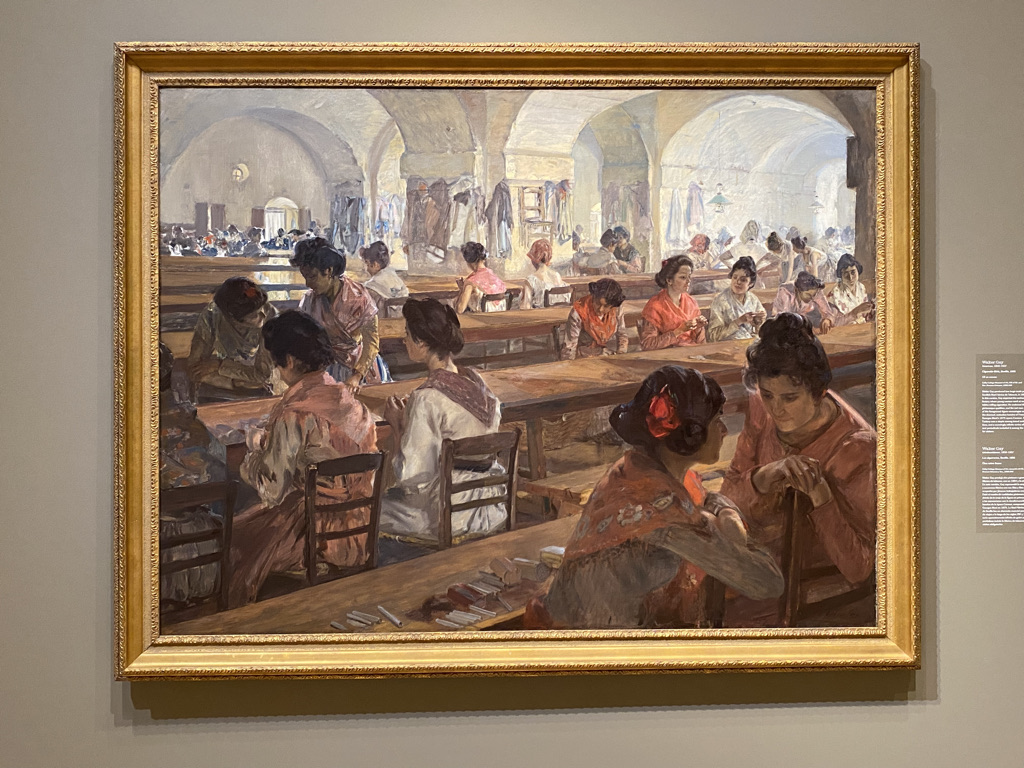
Amidst the impressive original works by Murillo, Sorolla, and Zuloaga, and some familiar pieces I’d seen before, but didn’t necessarily realize were by American artists like Walter Gay or John Singer Sargent, something else caught my attention relatively soon within the exhibit: several paintings by women artists who had traveled to Spain during this century (1820-1920). Women’s art stood out to me right away because, in general (and this is no secret!), women are vastly underrepresented in today’s museums. On a trip to the Kansas City’s Nelson Atkins Museum of art a few years ago, I remember waiting to post a piece of art for a #WomensHistoryMonth art thread on my twitter feed, and it took much, much longer than I had anticipated to find a painting by a woman — I ended up documenting two on that visit (but I admittedly did not spend much time in the contemporary rooms). And just this year, in fact, Madrid’s Prado has taken steps to increase the number of works created by women on display in its 19th-century rooms — from only ONE to 13 — on the heels of its successful and much discussed special exhibit “Invitadas,” or “Uninvited Guests,” which ran from October 2020-March 2021. So in the spirit of recognizing women’s artistic contributions, I thought I’d center this post on my Milwaukee visit to “Americans in Spain” on a few of the American women artists whom I “met” or learned more about as a result of this exhibit.
Mary Cassatt (1844-1926), Allegheny City, Pennsylvania
Mary Cassatt is actually one of the more well-known and celebrated of late 19th-century female painters, especially as a result of her friendship with Edgar Degas and the fact that her work was exhibited alongside famed French Impressionists of the late 1800s. Many of her paintings center on the private lives of women, or on mothers and their children, like the recognizable “Young Mother Sewing” (1900) and “Little Girl in a Blue Armchair” (1878). But it was her experience in Spain in the 1870s that marked a turning point in her young career, according to the “Americans in Spain” exhibit information. In the paintings she created in Spain, “she synthesized a modern approach to her subjects: she used straightforward and realist depictions of her figures, together with the bold and textured brushwork she had studied from old masters such as Velázquez. She achieved a breakthrough in style, which she developed back in Paris alongside the Impressionists” (from the description of “Offering the Panal to the Bullfighter“, 1873, which was part of the traveling exhibit). The painting below, “After the Bullfight,” is one of many produced from her studio in Seville, where local city residents modeled for her and she visited the bullfights to capture well-established Spanish archetypes, like matadors and flirtatious young women, “in moments of repose, far removed from the violence and spectacle of the ring”. A quick Google Image search of Cassatt and “Spain” or “Spanish” will bring up numerous examples of these beautiful portraits.
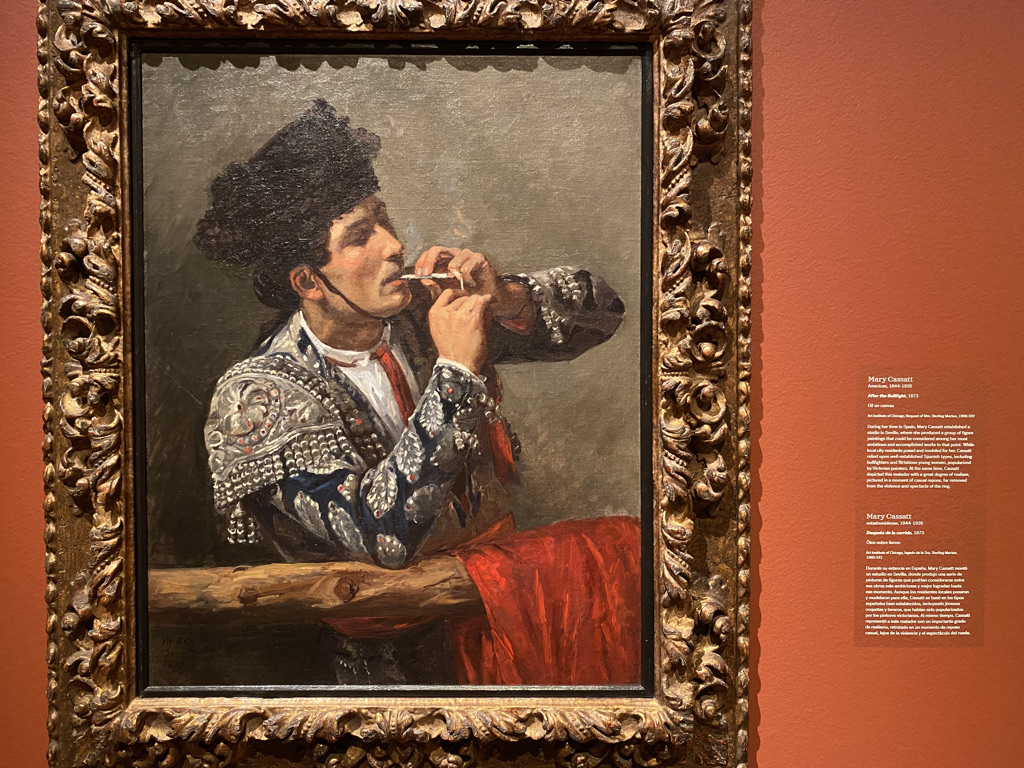
Elizabeth Boott (1846-88), Boston, Massachusetts
I had never heard of Elizabeth “Lizzie” Boott prior to this exhibit, and I was saddened to read about her life having been cut so short by pneumonia, only two years after the birth of her first child and just as she had been encouraging her husband (and former art teacher) to establish art classes for women in Florence. Fascinatingly/Disturbingly(?), it seems that Boott’s name is now most associated with the elaborate Gothic-Renaissance style funeral effigy commissioned by her husband, Frank Duveneck, upon her unexpected early death. I’m sure this falls within prime 19th-century romanticism, but today I find it a bit creepy when it’s one of the first things to come up when searching for information about this woman’s life! In any case, the below 1881 watercolor of the Alhambra is an example of Boott’s talents – painted when she was about 35 years old. According to the museum description, Boott traveled to Spain in 1881 with friends and fellow artists. In Granada she visited the Alhambra, and in her painting of the palace she “focused her attention on the details of the Nasrid architecture, the distinctive coffered ceilings, mocárabes (ornamented vaulting), and stucco carvings” as opposed to the more popular tourist sites of the courtyard and pools.
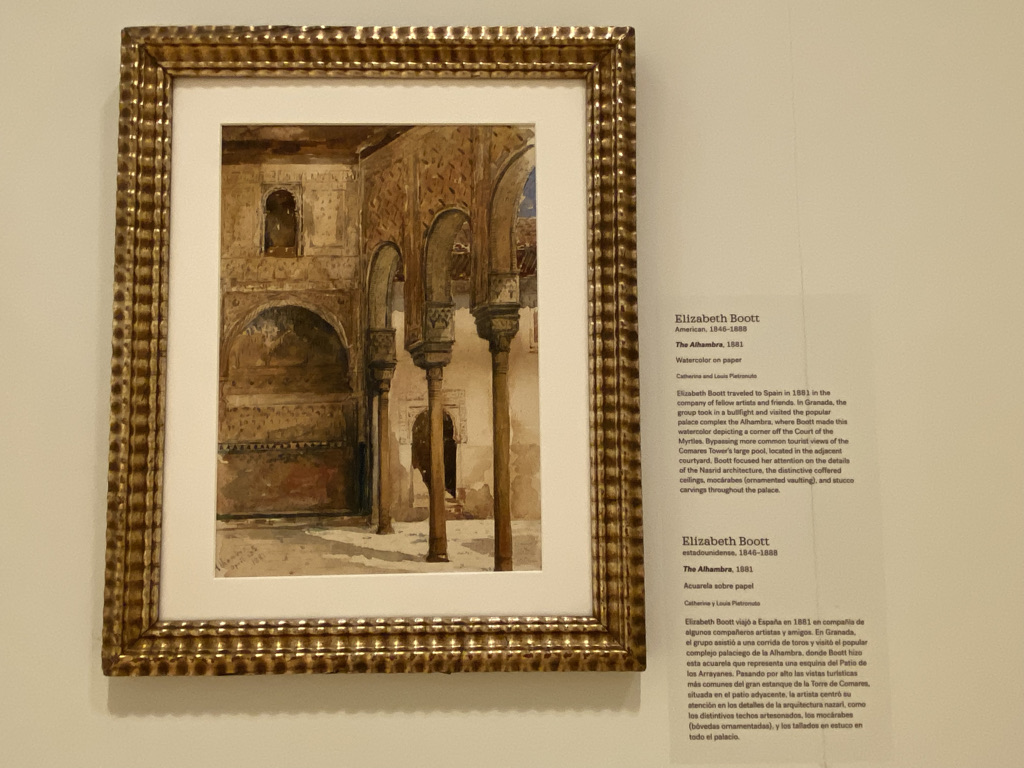
Mary Bradish Titcomb (1858-1927), Windham, New Hampshire
Mary Bradish Titcomb, who also displayed work as “M. Bradish Titcomb” to hide her female gender, was an American painter and art teacher who worked and resided predominantly in the Boston/New England region. Like Elizabeth Boott, she also traveled to Granada to visit the Alhambra palace… but about 25 years later, in 1906. The painting below captures an exterior view of the fortress, focusing on the parts of the structure dating to the 14th-century. In perusing other paintings by Bradish Titcomb, it seems she had a preference for impressionist-style landscapes and portraits of women, and she is often groups with American Impressionists. Her portraits of women share similarities to those of Mary Cassatt, in both the representation of women in relatively private spaces, and in their sketched, impressionist style… though it seems Bradish Titcomb has a bit more of a realist style and employs somewhat darker tones and shades of color. Two of my favorite portraits of women are “Lady in Lavender” and “Afternoon Tea“, and her 1927 landscape of “Marblehead Harbor” in Massachusetts is reminiscent of the lines and brush strokes typical of Van Gogh or Cezanne.

Carrie Lillian Hill (1875-1957), Birmingham, Alabama
This below painting of Segovia was the first one in the exhibit that I noticed had been painted by a woman. This landscape by Carrie Lillian Hill then prompted me to focus my attention on the inclusion or appearance of female artists for the remainder of the exhibit (I think I documented 6 in total, but I’m not 100% certain). According to the accompanying caption, Carrie Hill was an “intrepid tourist” who frequently traveled to Europe in the company of art instructors and students. Her first trip to Europe was in 1922, with her teacher and American Impressionist George Elmer Brown (see the timeline of her life here). She often “ventured to locations off the beaten path such as the Pyrenees and Balearic Islands.” She used her experience in Spain as a step towards learning to navigate and explore more unfamiliar cultures and locations, like North Africa, which she visited in 1927 on what would be her final trip to Europe. The colorful “Tunis Market” is certainly a product of this visit, and her other European landscapes can be viewed here. Back in the US, she was one of four Alabama artists and the only woman to receive assignments from the Public Works of Art Projects Division, and she completed two murals in Birmingham. Her 1937 “Mother Goose Mural” or “Storybook Mural” has been restored and is a celebrated feature of the East Lake Branch of the Birmingham Public Library.

While I visited the “Americans in Spain” exhibit hoping for inspiration for my new Fall 2021 courses — two of which I have decided to center on art and/or the interplay of art and literature (more on those soon!) — I was pleasantly surprised to come away having learned more about these talented American women. I was particularly struck by their independent travels, or tourist trips with friends or an artist community, as opposed to travels with husbands or families (although some did travel in this traditional company). In terms of inspiration and ideas for my courses, I managed to get plenty of those too. First, the Milwaukee Museum offers a FREE APP for iPhone, designed by Marquette University (Dr. Eugenia Afinoguénova and Shiyu Tian) and funded by the National Endowment for the Humanities, the Henry Luce Foundation, and the Milwaukee Art Museum’s American Arts Society. This is a fantastic resource and I am planning to incorporate it into my Transatlantic Art course; I’ll likely have my students use it as a model for how to showcase a piece of art through the lens of a very specific theme, and for a general audience. Here is a screenshot featuring one of Mary Cassatt’s paintings:
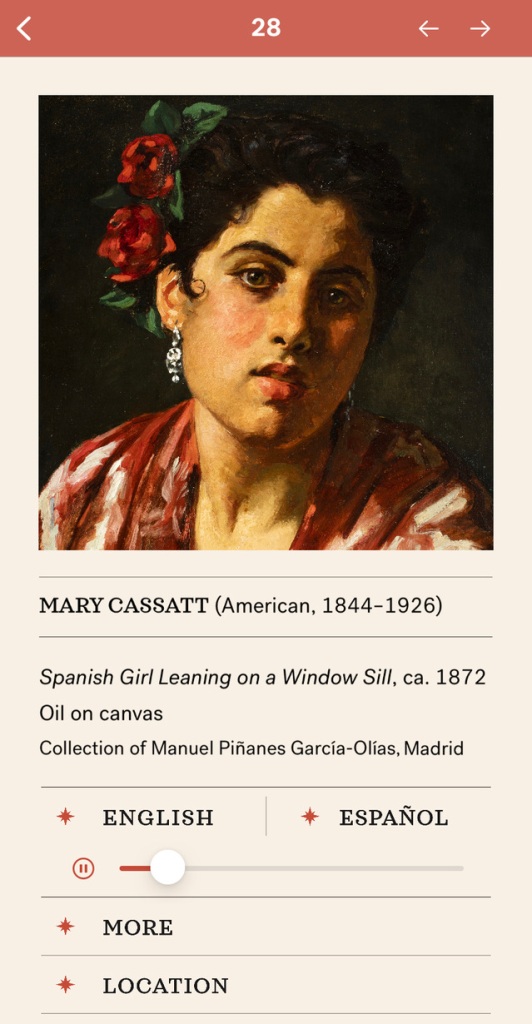
Second, the 220+ page volume that accompanies the exhibit contains well-researched original essays on topics ranging from “copying the masters”, the Spanish working classes in art, learning and teaching about Spain in the 1880s, and 19th-century travel books. Finally, the Museum offered short dual-language English/Spanish booklets — “Family Guide” / “La Guía para Familias” — at the entrance to the “Americans in Spain” exhibit. While these are designed for families and especially for younger children, the bilingual activities represent what I think might constitute a creative project for my Transatlantic Art course. I’m still toying with this idea, especially in light of increasing concerns over Covid and the Delta variant that might once again throw our academic semester into chaos… but I’m optimistic that it might work. Below are a few pictures I took of the dual-language booklet and its activities; as you can see, though directed towards younger children, the creation of these types of activities would lend itself nicely to improving and refining students’ L2 language skills. Activity design requires the selection of very specific, descriptive vocabulary (colors, family, cultural content), the use of commands, and the organization of mini-narratives based on common artistic, cultural, or historical themes. If you follow my blog, you know I love non-traditional assessments that incorporate visuals like maps or social media… so as I design this class and as the semester progresses, I’ll make sure to post about any experiments.
RESOURCES
FREE App: “Americans in Spain”, via the Apple App Store. Milwaukee Art Museum.
Portus, Javier, et al. The Spanish Portrait: From El Greco to Picasso. Scala Arts Publishers, Museo del Prado, 2006.
Ruud, Brandon. “‘The Most Picturesque Scenes Abound in the Lower Quarters.’ American Art and Spanish Labor”. In Americans in Spain. Painting and Travel, 1820-1920. Yale U P, 2021. pp. 75-97.
Ruud, Brandon and Corey Piper, eds. Americans in Spain. Painting and Travel, 1820-1920. Yale U P, 2021.













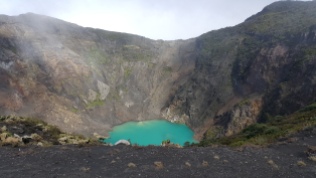






Pingback: Geographies of Urban Female Labor and Nationhood in Spanish Culture (1880-1975) (review) | Rebecca M. Bender, PhD